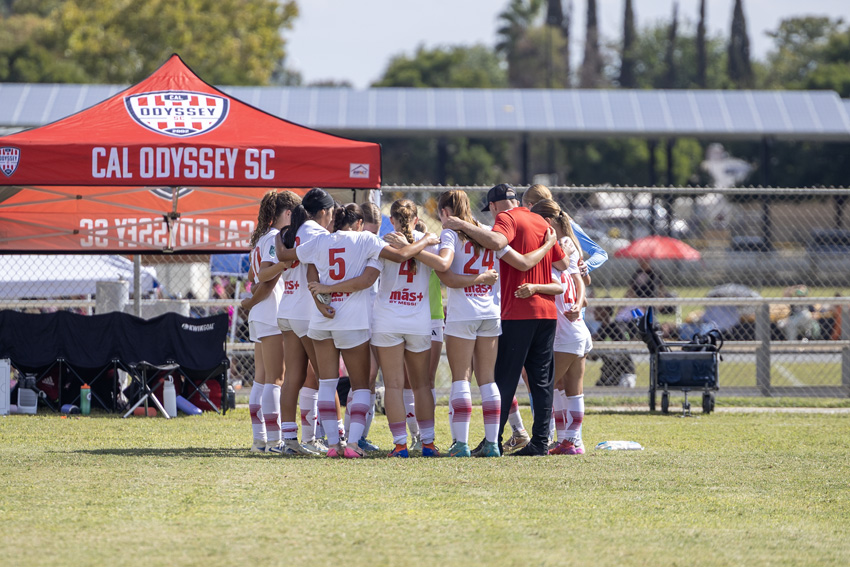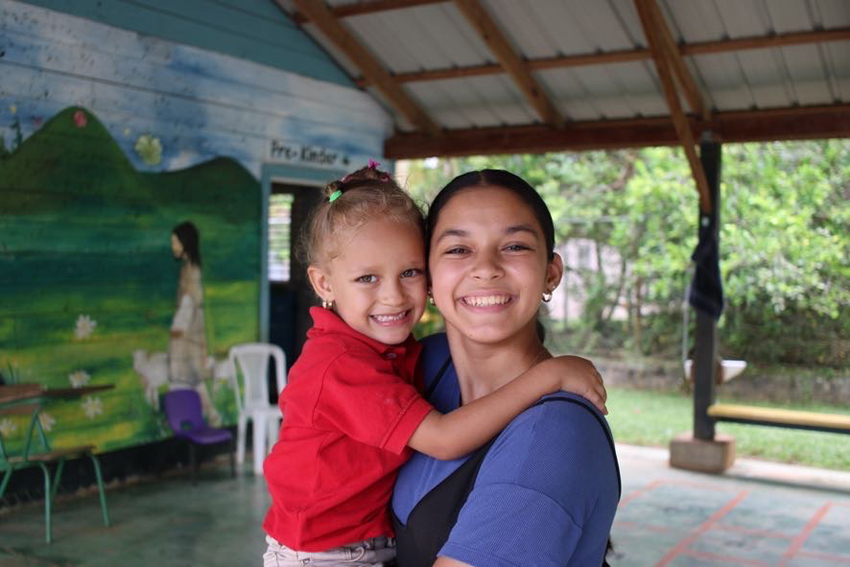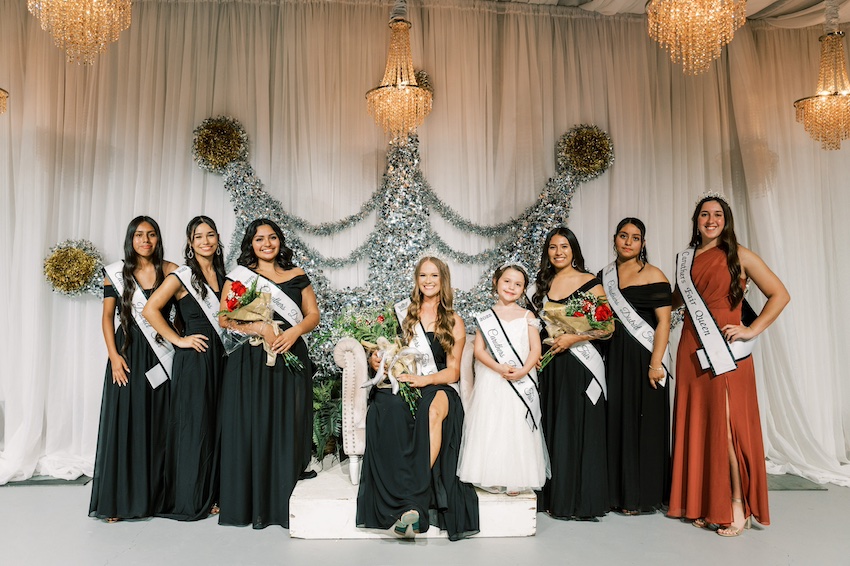Building a campus newspaper legacy
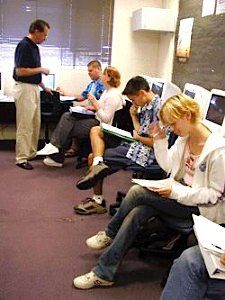
While those interested in The Feather Online history can read about the staff, advisers, awards, etc. in the About us, The Feather Online history and/or Achievement sections, the following article is the second article, part 2 in the series, which attempts to recount The Feather Online history under current advisers Greg Stobbe and Kori Friesen. For part one, read The Feather history: Award-winning trips, Pt. 2 or The Feather Online returns with new design.
The NSPA Pacemaker and CSPA Gold Crown winner and nationally ranked online campus newspaper, The Feather Online, has been one of the elite teams in Fresno Christian students’ life.
Before the 21st century, The Feather was only a campus print newspaper. The print edition of The Feather began in 1982, five years after Fresno Christian Schools opened in 1977. The print edition was published 6-8 times a year. Current adviser Greg Stobbe took over The Feather in 1995 and helped direct The Feather print edition until it ceased operations in May 2010, when it solely became a online daily newspaper.
“I accepted the honor of developing The Feather print edition from former adviser Molly Sargent, never thinking campus students would move their paper to the internet,” Stobbe said. “I am a part of the cut and paste throwback crowd and evolved with the advent of web-based journalism. However, newspapers around the country were already posting online by then, and in many cases, as hybrid newspapers.”
The online newspaper actually began in 1997–1998 school year, when adviser Stobbe started to pass the idea around to the print editor-in-chief then, Nate Warkentin.
“After a conversation with then-Superintendent Tim Wilkins in 1996, he convinced me to look for a way to begin publishing The Feather via the internet,” Stobbe said. “Major news corporations were already co-publishing some news on both print and web, and he showed me it would just be a matter of time before education would follow suit. I liked the idea that The Feather might be one of the first student newspapers in the country to have an online edition.”
By 1998, Feather students were publishing a portion of their print newspaper articles online, weekly on a template-based website: Highwired.com. The Feather staff saw this as another way to get the school news out to a growing audience online. Then, after the turn of the century, adviser Stobbe reached out to talented students to be webmasters, working with the IT department and they rebuilt The Feather to a custom site in 2001.
After that, it was only a matter of time before they published articles each week to augment their print edition. It took time though for students to go to the web version on a regular basis because Feather staff were not publishing every day. — Greg Stobbe, The Feather Online adviser
To gradually move the paper to the internet, The Feather staff had been published both in print and digitally. As the generation moved on, staffers believed in the process; The Feather became solely a daily online newspaper in the fall of 2010.
The assistant professor in Mass Communication and Journalism at California State University, Fresno, Bradley Hart, was The Feather editor-in-chief from 2001 to 2003, spoke about his experience of working on The Feather in the early 2000s, when The Feather was transforming from print to digital.
“We had some late nights when we needed to put the newspaper out,” Hart said. “We had to be at the printer by a certain time; we had to formate the photograph and set color balance in a certain way, made it all look great when they came out. So those considerations don’t exist anymore; it is totally a new world now. I think that is the biggest thing changes as I see it. The newsroom can now run on a very different path; there are much less pressure and the overhead the cost of the paper is much less than it was.

“Certainly, we were expanding the online product dramatically,” Hart continued. “It was the really early 2000s; there weren’t even a lot of college papers went online. Remember, there were no social media in these days. Facebook did not exist yet. There was no Instagram, no Twitter, so we were pretty much on the cutting edge then.”
With then-superintendent Wilkins backing the idea, adviser Stobbe went ahead and began enlisting Warkentin to put Feather articles on the Highwired.com website. While they did not put every article on the web, the site did give Feather students a way to publish online for a worldwide audience. Unfortunately, Highwired.com only was funded for three years, and The Feather articles disappeared with their demise in the summer of 2000.
“Obviously, technical issues associated are with that,” professor Hart said. “The basic was about how does the web even work? How do you formate out do you write HTML? How do you actually keep those things online? How do you form out the photo correctly? So that was pretty much the undiscovered territory; we had to learn those stuff. We really taught ourselves.
“I think all of us from the advisers, administrations down to myself were really learning curve like how does this stuff even work at Fresno Christian,” Hart continued. “Nobody really knew what the future would be. So I think it is a really interesting transition because we were still producing printed products, investing a lot of time still seemed like our primary focus, and we had the online things going on too. But out patience really paid off, because we won a bunch of online awards.”
The Feather editors, Stobbe and then IT director David Martens spent the next 18 months starting a new Feather built on a FileMaker Pro format. It was ready for daily publication in October of 2001. While FileMaker Pro was never designed for a web-based site, it provided a way for online publishing for three years.
The Feather Online, since its inception in 2001, is a product of student innovation and design. While Feather advisers are an integral part of that, each version is designed and created using Feather staff and its web team.

The first reformatted version of The Feather Online originated in the summer of 2004 when adviser Greg Stobbe charged senior Doug DenHartog to rewrite the code and redesign the paper into an HTML format. The editors wanted to make better use of the newer technology available since the original online design created using FileMaker Pro in 2001. The tricky part was not the creation of the first new Feather, but the linking of articles from one format to another was tricky and it caused some of The Feather history to be jumbled or lost.
The next rewrite was handed off to junior Matthew Shattuck in June 2005 and continued through the 2006-07 school year. Shattuck added new sections and expanded the capabilities of The Feather Online to include the first videos. However, after Shattuck graduated, the staff determined The Feather Online needed the third revision in order to restructure the PHP scripting using a more modular design.
Stobbe reached student Andrew Rurik, taking over Shattuck’s job as a webmaster as Shattuck was preparing for graduation. Rurik chose to change the HTML structure from table-based design to a layers base. This version of The Feather Online launched in January 2008. Rurik, ’09, former editor and webmaster of The Feather, explains methods used to grow the cite.
“I was approached by Stobbe and (then technology advisor) David Martens to join The Feather staff as the assistant webmaster,” Rurik said. “Current webmaster Matthew Shattuck was preparing to graduate, and we knew that we were going to re-design the website the following year. I learned how to write, how to shoot photos, and how the code for the site worked.
“My first year as webmaster, we underwent a massive revision of the site, in which we wrote some 20,000 lines of code by hand,” Rurik continued. “It was like having a full-time job while attending school – I would work an additional two-four hours after school most days.”
Hi, I made a short doc and I’m proud of it. It’s in a competition. Take a moment and watch/vote for it! https://t.co/MIJ6nvYWlA pic.twitter.com/CJLuMQ85G3
— andrew rurik (@andrew_rurik) December 6, 2017
The new generation needs newly designed website, newly designed website needs the multimedia piece to support. The Feather stuffers realized this theory, then started building the multimedia department around 2008.
Brooke Stobbe, ’12, daughter of adviser Stobbe, the international student coordinator for AmeriStudent at Fresno Christian Schools, joined The Feather in 2008 as a multimedia staffer, talks about her experience working on The Feather at the multimedia department.
“I was working in the multimedia department while the webmaster was building it,” Brooke said. “So there was a lot going on, and some going on with The Feather at the time with the multimedia, videos and podcast. I don’t think there were audio and slides at the time.
“It was just starting to develop,” Brooke continued. “There were two guys, Mitchel Callisch and Andrew Rurik, who were making videos for the Feather out of their own interest. That’s what they continue to pursue right now in their careers. And there was a girl named Claire Kister who was doing some podcasts when I got there. That’s what was happening multimedia-wise on The Feather. There were photos that were taken, a couple of photos were posted every week, but everything else was writing. I enjoyed writing, and I had a blog while I was on The Feather staff. I was still writing articles, but my main focus was trying to build a multimedia department and have it be more interactive and creative and more digitally enhanced.”
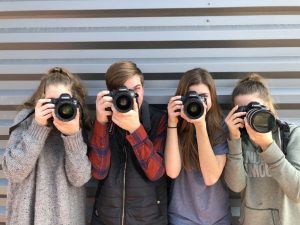
Right after webmaster Rurik graduated in May 2009. David Casuga accepted the position of the webmaster, added new features including audio and visual slideshows, expanded comic and podcasting sections and new media capabilities to The Feather Online. Casuga graduated in May 2012. As the generation progress, online news requires multimedia as a basic need.
After teacher Kori Friesen‘s first-year teaching full-time at Fresno Christian in 2013, Friesen saw a need at The Feather that she was able to fill. Thus The Feather staff welcomed Friesen as their first photojournalism adviser.
“I had a deep respect for the program that Stobbe had created and was super impressed with The Feather and all that they did,” Friesen said. “Looking at the online visual representation, I felt I could help. Many students knew that I was a photographer and were asking me to teach them photography skills. My schedule allowed for me to jump in the following year and teach the first official photojournalism class.
“During my first year with The Feather, I was able to take students who really did not have experience in photography and create photojournalists out of them,” Friesen continued. “The first team consisted of five students who were eager to learn and quickly developed their photography skills. It was exciting, fun, and stressful all at the same time. Out of that first team, two have gone on to continue their photography skills in the professional world. We had a team of eight in 2015-2016 and 12 students in 2016-2017, with five of those being the first video journalism team The Feather ever had. Eight have gone on to utilize these skills and make money in a professional capacity.”
Friesen continues to advise the photojournalism and videojournalism staffers; she helped overcome the challenges while The Feather was consummating its multimedia department. Meanwhile, the Old Feather website did not have the capabilities to showcase quality photography and was literally dying. Since the website died at the end of 2015, Friesen saw it as an opportunity to build a new site that was a combination of Greg Stobbe’s vision for The Feather and her use website design skills.
Having a website where every story has a feature image adds pressure to the photojournalism team to stay on top of it and create imagery worthy of the website. The pictures now take the lead on the website. In today’s culture majority of people (62% of adults) get their news from a social media site and the image is the hook that draws people in. Photos play a bigger role then ever in the world of news because of social media. – Kori Friesen, The Feather co-adviser
While designing the new website, adviser Friesen was inspired by the world of photography. She started working alongside new technology director Robert Hyatt and campus alumnus Justin Pierce; the three of them were able to create the extensive vision and requirements that Stobbe shared. The process was very detailed and took the summer meeting regularly and many long hours. The new website was built and customized from a template with every click thought through.
Editor Sam Cross, ‘19, commentates on San Francisco’s world famous cable car at the corner of Powell and Market streets. Purchase tickets for $7 on car or stand near stops. @sfgov @NSPA #thefeather pic.twitter.com/mh1MUlwKYa
— The Feather Online (@thefeather) April 12, 2018
With the brand new design of the website created with a multimedia system in mind, The Feather editors continue their work on the new website with the WordPress template, archiving past articles with adviser Stobbe, photojournalism and co-adviser Friesen and new IT director Hyatt. The total switch from a proprietary website to a modern WordPress design continues since the old Feather Online was shut down April 15, 2015, and retired. The new Feather Online began publishing again, Sept. 8, 2015, after being shuttled for five months. Be sure to look for past Feather article via the Archive button on the left menu bar.
Since October 2015, there is no official student webmaster. The Feather’s website has successfully become a modern digital daily newspaper in the Central Valley. While past webmasters played a significant role, the 2017/18 website is a collaboration between Feather editors, staff and their advisers, Stobbe, Friesen and IT director Hyatt.
To know more about The Feather’s history, go to the archive site.
Look for Part Two, Feather’s traditional trip to NYC in an upcoming Feather article.
For more articles, read BREAKING: Spring sports rally to honor sports teams or COLUMN: Traditional Punjabi wedding showcases culture, family.
This author can be reached via email.


